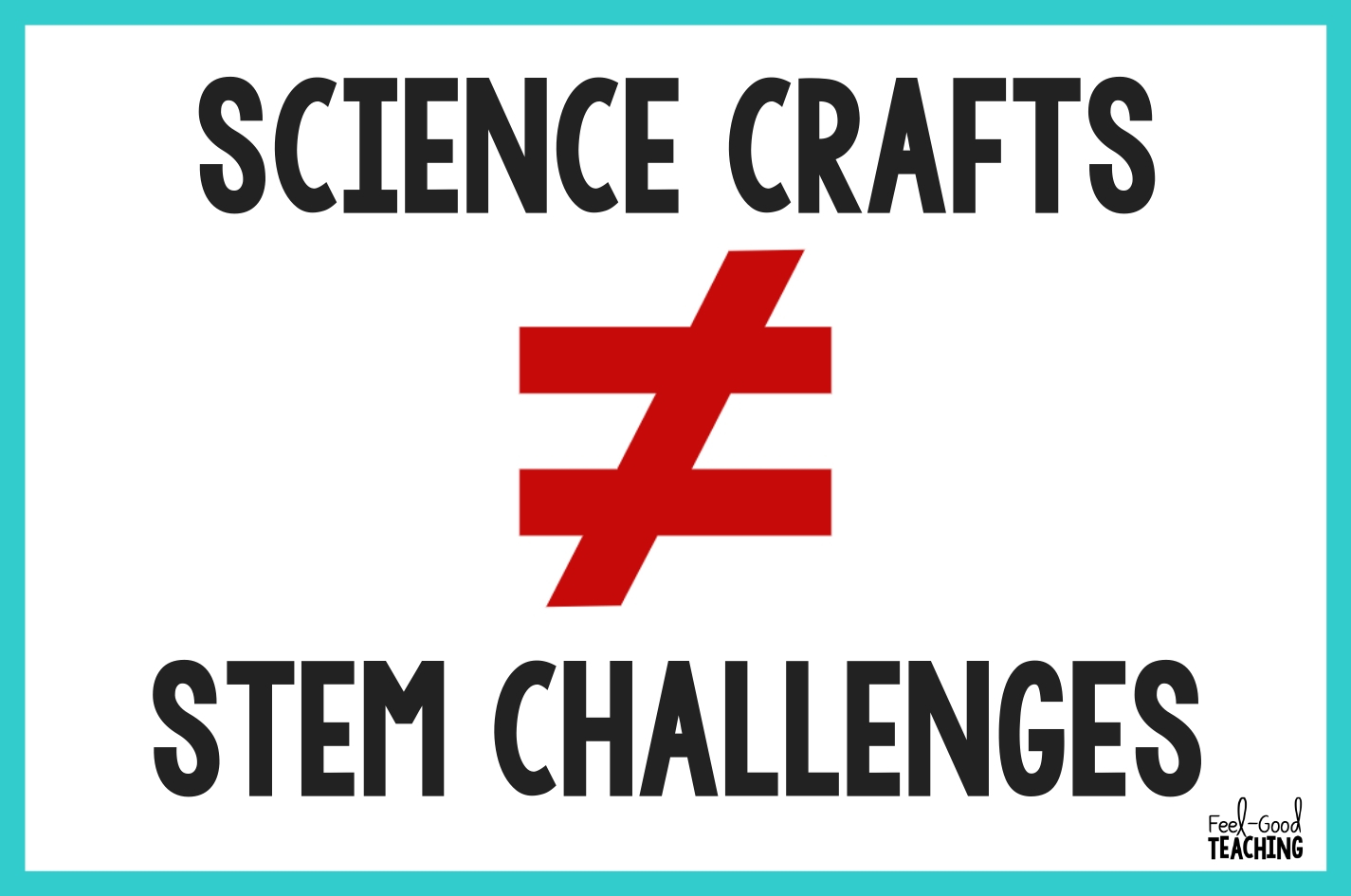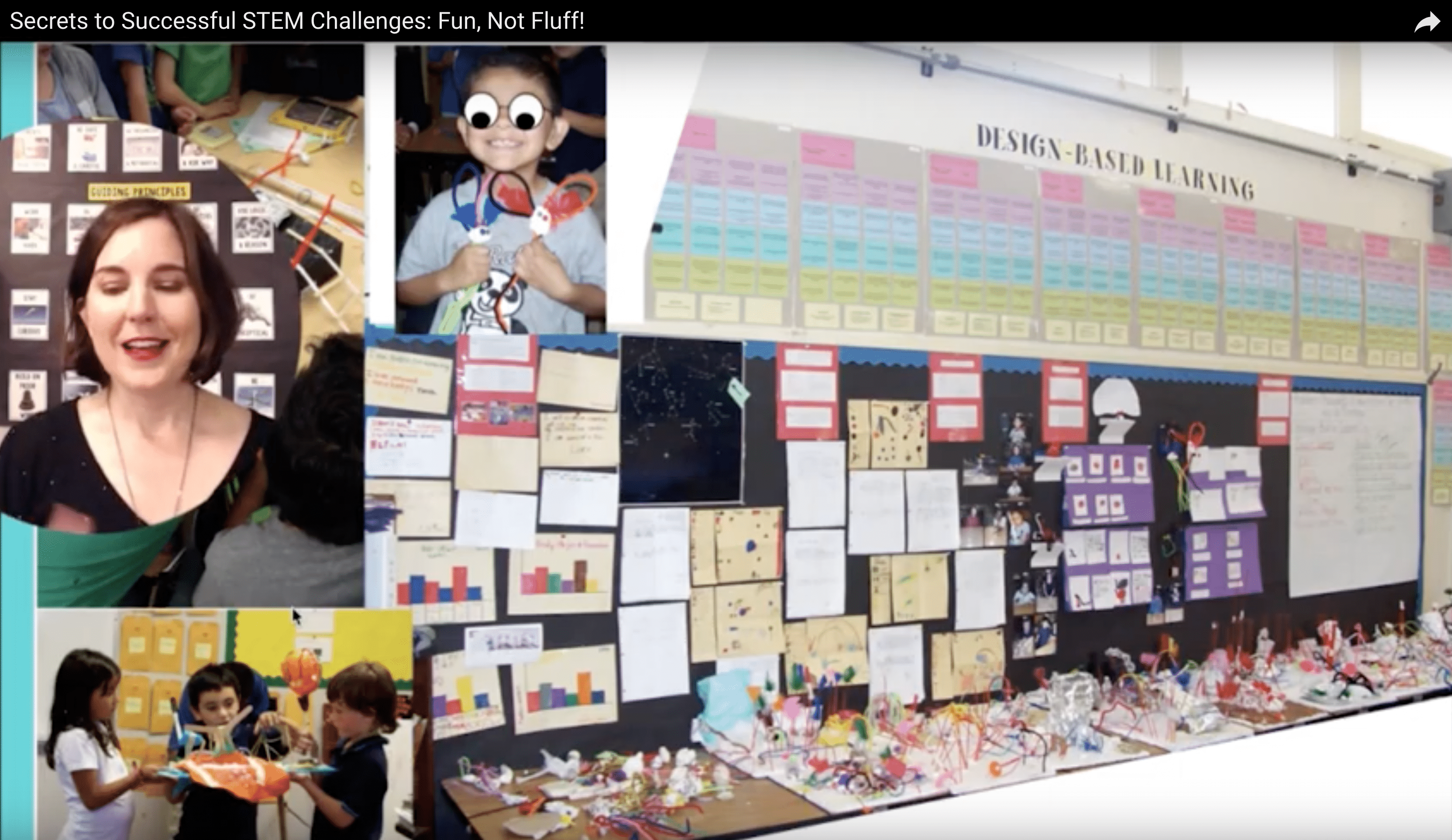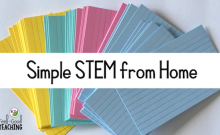I’ve said it before, and I’ll say it again: I enjoy crafts. I mean no disrespect to craft-lovers, but science-themed crafts are NOT STEM Challenges.
Period.
Hard stop.
End of story.
You know how some topics make you next-level insane? Those things you try to play it cool about so you seem like a calm, rational, totally reasonable human-being on the outside, even though you’re hulking out inside?
This is that thing for me. When I see teachers posting pictures of crafts and describing it as a “great STEM Challenge”, it makes me upset. I’m talking about an embarrassing, unnatural degree of anger. Sometimes I feel like I’m screaming into the void, for reals! 🤣
Why is There Confusion About STEM Challenges vs. Crafts?
It makes perfect sense that teachers – and everyone else – would be confused about what constitutes a STEM Challenge vs. a craft. There are a LOT of mislabeled activities floating around on the Internet — so, so many!
Some are crafts, some are hands-on activities, and some are actual challenges.
There’s no governing body regulating what people call their resources and lessons. I can call myself Miss America any time I want, but that doesn’t make me a beauty queen!
Just because it’s a hand-on activity and it involves a science topic, that just doesn’t make it a STEM Challenge.
Hey Kerry, Why Are You So Salty About This?
I worry that teachers are hearing about all the amazing benefits of what STEM Challenges can do to help students with soft skills (like collaboration, communication and growth mindset) and content standards. Naturally, they’re excited to try it out.
They try something called a STEM Challenge online that is really a craft, and they do one of two things:
- They feel like they can check science & STEM Challenges off their list this week because they did the thing everyone has been telling them is awesome to do.
- Decide STEM Challenges are cute & fun, but there’s not much to them. They don’t see how the activity they just completed could possible deliver on their objectives (because a craft can never deliver on the objectives of a STEM Challenge). These teachers walk away wondering what all the hype was about and decide STEM Challenges aren’t worth the time.
Neither outcome is acceptable in my view, and it frustrates me that teachers are being misled by people trying to cash in on the popularity of STEM Challenges without really understanding what one is.
How Can You Know You’ve Got the Real Deal?
I’m so glad you asked! Here are five questions you can use to evaluate hands-on science activities.
1. Is there an open-ended problem here for kids to solve?
This means there should NOT be step-by-step directions.
There should be some form of a criteria & constraints list that students use to guide their designs.
The challenge should result in a variety of possible successful designs; there is not one right way to build the thing.
Imagine you ask students to create a model of cloud types by gluing cotton balls to paper. Is this an open-ended problem? Nope. Students having to manipulate the cotton to look like various cloud types isn’t much of a problem at all, but it certainly isn’t open-ended. When they are all done, their work should look like everyone else’s and like the images of clouds they located in their research.
2. Are at least two elements of STEM integrated?
STEM stands for science, technology, engineering, and math. You’ll sometimes see other letters thrown in (art, reading, robotics, religion), but let’s keep it old-school with STEM.
A STEM Challenge should require students to apply skills in at least two areas of STEM, preferably all four.
In our clouds activity example, I’m hard-pressed to see more than the science. Gluing cotton isn’t really engineering. While it’s certainly possible to extend the activity with math or technology, at best this activity could have weak connections to other components of STEM.
3. Is there a challenge involved?
Is it possible, even likely that some designs could fail? Great! That’s what you want.
If you know before you start that all students would succeed, it’s too easy: STEM Challenge Easy.
Thinking about the cloud activity, how challenged will students be to successfully complete the task? Will students have to dig deep to work on this?
4. Could you see students doing multiple iterations of this activity to improve their designs? Would there be a way to make the design perform better, be more efficient or effective?
Is this an activity your students will beg you to do again because they thought of a new idea or a better way to do it? If you do the activity again, can you expect a variety of new outcomes?
The answers to all of the questions should be “Yes!” if it’s a STEM Challenge.
How does the cloud activity fare with these questions? I don’t know about you, but I have never done that activity more than once with the same group of students.
5. In order to complete the activity, do students engage in the 4 C’s of Engineering?
The 4 C’s of engineering are: collaboration, communication, critical thinking, and creativity. Do students need to employ each skill in order to complete the activity?
Let’s return to the cotton clouds activity. How much creativity is required? Not much. In fact, creativity could be problematic since you want the cotton to actually look like the intended cloud types.
How much critical thinking is involved? Again, not much. Students are basically manipulating cotton to look like an image from their research.
How much do they need to collaborate or communicate with peers to complete the cloud activity? Not much, if at all.
Note: It’s definitely possible to have students work on STEM Challenges individually, but most work better when done with partners or small groups.
Hey, I Like My Regular Hands-On Science & Crafts!
Awesome! I’d never suggest that STEM Challenges are all there is and all you should be doing! (Although, this is my website, so you can see I’m very passionate about them!)
I’ve done that cloud activity I described above. It was a nice hands-on activity. It made a great bulletin board display when we added the writing piece. All kinds of hands-on activities are appropriate for science!
What I want is for teachers not to get tricked into thinking they’re “doing STEM” when they’re doing something else. That “something else” will have its own set of benefits, to be sure.
But we only get so many instructional minutes, so we have to be really thoughtful about the choices we make.
STEM Challenges are incredibly special in their ability to deliver on so many content standards and soft skills when they’re done in a high-quality way. I just want teachers to be aware that not everything called a STEM Challenge actually qualifies as one.
Want to Know My Secrets to Successful STEM Challenges?
I recorded a webinar training last summer where I shared all my best tips and tricks. You can check it out here.
Think I’m being too grouchy about STEM Challenges vs. Crafts? Did I miss an important point?
Let me know in the comments!
PIN ME














Angie
December 13, 2019 6:34 pmI think you are awesome and this is exactly what I want to share out today!
Kerry Tracy
December 16, 2019 1:50 amThanks, Angie!